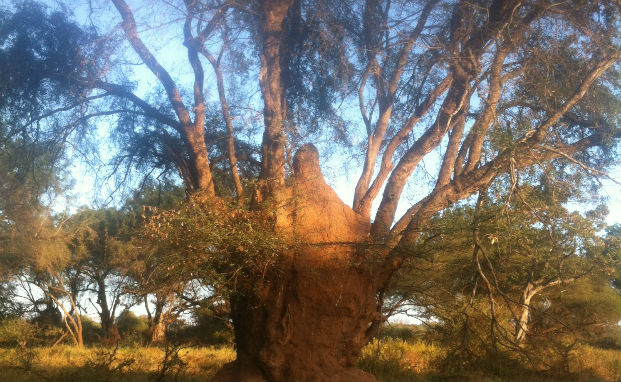
The nyala or Mashatu tree, as it is known in Botswana, is an enormous evergreen with a dense spreading canopy and drooping branchlets. It is often found growing out of nutrient rich termite mounds or on deep alluvial soils near rivers. Baboons can often be found roosting in these trees and many camps are built under them due to the shade which they offer.
Vote for the fact you find most fascinating
Nyala berries are yellowish brown when ripe. They attract a great deal of wild animals including green pigeons, elephants and antelope. Humans eat the fruit fresh and grind the dry pulp into a meal for porridge.
Branches grown low down give the illusion that the nyala tree is multi-stemmed.
Nyala trees indicate the presence of ground water. Their long roots will go all the way down until they find the water table.
To grow so big the nyala tree requires highly nutritious soil and access to water. This is why it is often found growing out of a termite mound and along rivers.
The dense appearance of the nyala tree is because its leaves grow directly out of its branches and from its trunk.
The wood of the nyala tree is attractive although the dust created when working it can be of irritation to the nose and throat.
The nyala tree is so named because the nyala antelope is very partial to the berries which fall from the tree.



